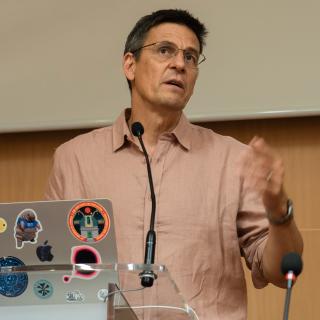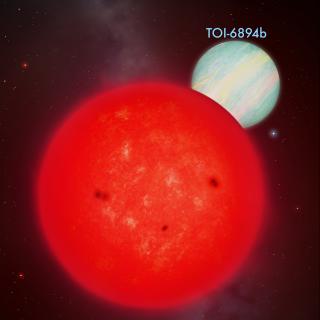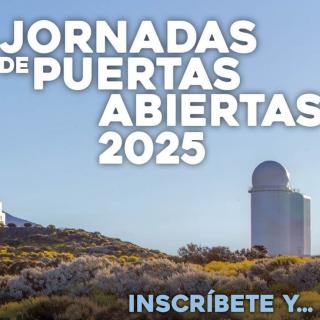Research led by Artemi Camps, who started it while he was studying for his doctorate in the Instituto de Astrofísica de Canarias and the University of La Laguna, and is now working at the Instituto de Astronomía of the UNAM (México) has discovered an expanding bubble in the disc of a galaxy. With a diameter of 15,000 light years, it is the largest bubble of its type observed in any galaxy. The study has recently been published in the journal Monthly Notices of the Royal Astronomical Society.
A galaxy like the Milky Way is made up of hundreds of thousands of millions of stars, with a mixture of interstellar gas and dust, all presumably bound together by a massive halo of dark matter which surrounds it. But galaxies are not isolated objects, and the bigger ones, such as the Milky Way itself, have grown by “eating” other galaxies. This process, in which neigbouring galaxies interact and finally merge, has played a powerful role in the evolution of the universe. Although these interactions and mergers were more common in the past, when distances between galaxies were much smaller, we can study them at the present epoch by observing pairs of galaxies in different stages of interaction and merger. We know that even in the early stages of an interaction the perturbed gravitational fields can cause the gas to flow, and to compress, so that stars form at an accelerated rate. The gas can also flow towards the centres of the galaxies, feeding the supermassive black holes which are very common in the nuclei of galaxies.
The research just published is based on the observation of a pair of galaxies in interactions: Arp 70a and Arp 70b. Camps and his team studies Arp 70b with a Fabry-Perot interferometer. This instrument can obtain a complete two-dimensional map at high resolution, of the velocity inside a galaxy. It produces these maps by measuring the light emitted by ionized hydrogen, which is found in galaxies where there is a lot of star formation, because the young hot stars ionize the hydrogen in the space around them. Ionized hydrogen can also be observed in the surroundings of supermassive black holes which emit energy over a wide range of wavelengths, including the ultraviolet radiation which ionizes hydrogen.
“The studies in my thesis were aimed at exploring the gas in expansion around clusters of young, massive, hot stars in a variety of galaxies” explains Camps. To do this, he developed an analysis program called BUBBLY which allows astronomers to use the maps of velocity given by a Fabry-Perot to discover, and measure the bubbles of hot gas by mapping their velocities. “Their expansion” explains the researcher “is due to a combination of the powerful winds emitted by these stars while they “live” and the explosions of the supernovae when they die. Measuring the masses and the velocities of the bubbles we can discover how much energy the star cluster injects into the gas during its lifetime”
“Interacting galaxies usually have zones of strong star formation” comments John Beckman, an IAC researcher and co-author of the article “and this motivated us to investigate Arp 70b”. When they were analyzing the enormous bubble in the galaxy the also found, around the nucleus, an expanding region with even much more energy. Studying the geometry of this expansion, Camps showed that this energy flow does not have the shape of a bubble. It is an outflow in the form of a cone, centred on the nucleus of Arp 70b, with a doublé structure, one cone emitted above the plane of the galaxy, and another symmetrically below. The huge amount of energy which it emits (equivalent to a million supernova explosions) and its structure, gave the clue that it is a phenomenon associated with a supermassive central black hole, showing that Arp 70b has an AGN (active galactic nucleus) at its centre.
“We used analysis of its spectrum to show that it is an AGN, although not one of the most powerful” explains Camps, “but the expanding bubble in the disc of the galaxy is, in its way, more remarkable. It has a diameter of 15,000 light years, and is the largest bubble of its kind ever observed in any galaxy”. The astronomers are convinced that these energetic phenomena are due to the gravitational interaction between the galaxies Arp 70a and Arp 70b, but there is still a mystery to solve. Although the two phenomena are physically separated, and are almost cetainly not part of a unified structure the observations allow the possibility of an alternative scenario: a phenomenon in which the outflow from the nucleus is the cause of the superbubble, because this outflow seems to be pointing directly at the bubble. If this causal effect is confirmed it would be of considrable interest, and merits a deeper study.
Article: A Camps-Fariña et al., “Arp 70: an interacting galaxy with extreme outflows”, Monthly Notices of the Royal Astronomical Society, Volume 493, Issue 1, March 2020, Pages 1434–1446, https://doi.org/10.1093/mnras/staa347
Contact in the IAC:
John Beckman: jeb [at] iac.es (jeb[at]iac[dot]es)



